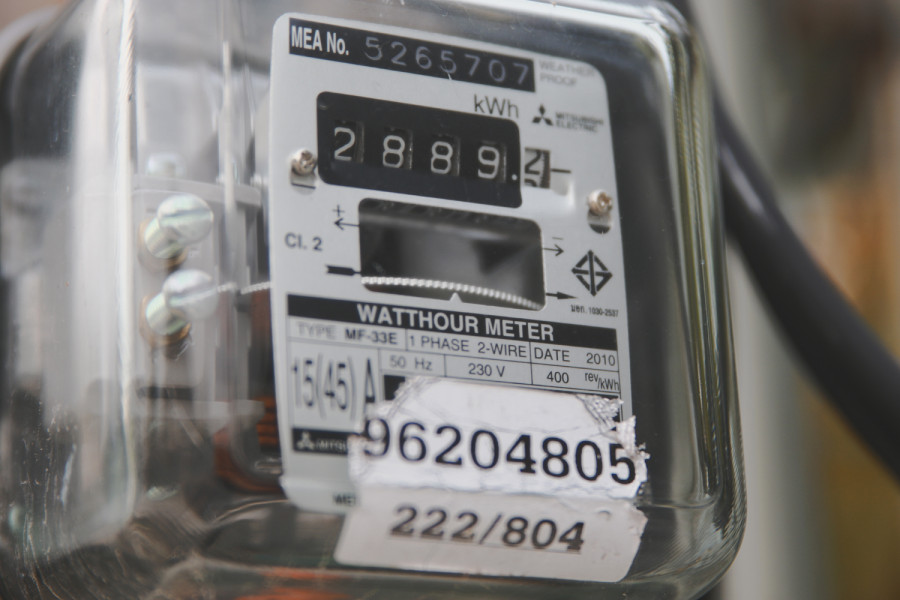Columns
Is electricity cheap enough to replace cooking gas?
To increase demand, making the per unit cost of electricity cheaper would make sense.
Saroj Koirala
Nepal’s potential for hydroelectricity generation is often exaggerated. Still, researchers and scholars agree that nature has placed a minimum of 40,000 MW of technically feasible hydropower at our disposal. It wasn’t long ago when Nepal faced an acute shortage of electrical energy. But thanks to the skilful management of Nepal Electricity Authority (NEA) and active participation from the private sector, Nepal has been able to improve the condition by some extent. As most of the hydropower projects in Nepal are run-of-river types, we are doomed to have surplus energy in the wet seasons and suffer from a deficit in the dry seasons for the foreseeable future. This indicates a humbling reality that Nepal will be dependent on India in terms of electricity for several years to come. Amidst the indecisiveness surrounding the sustainability of energy banking and the lack of comprehensive discussions regarding trans-border energy trade, Nepal needs a way to manage the seasonal surplus of electricity, especially after the completion of the much-awaited Upper Tamakoshi Hydropower Project (which has an output capacity of 456 MW).
There are many ways in which Nepal can utilise its energy resource as a pathway to prosperity. Realistically, trans-border energy trade solely cannot offer any dramatic leaps of economic growth. Despite popular belief, many scholars argue that increasing internal consumption is the key to growth. This is closer to the truth than what many people believe. Use of electricity in mass transit and increase in consumption of power in the household to replace non-native sources of energy will not only help Nepal take a step towards self-reliance, but it will also ease Nepal’s crushing trade deficit burden. Nepal imported over 370,000 tons of Liquefied Petroleum Gas (LPG) in 2017-18. That amounts to a public expense of over Rs25 billion, which can be a significant cost-saving point if electrical energy produced in the country is widely utilised. Nepal Electricity Authority has requested the people to increase their consumption of electrical power. However, the cost benefits of domestic electricity that the country gains may not necessarily transfer to the people.
To understand if cooking with electricity is cheaper, we need to understand NEA’s current electricity tariff structure for domestic consumers. As we know, in the case of local consumers, the electricity authority employs a block tariff system in which the rate per unit of electricity consumed increases with an increase in total energy consumed by the meter. This form of block tariff system was put in place for two primary purposes. First, to provide electricity at a cheaper rate to people with lower energy consumption, as the ability of a family to consume power directly corresponds with their financial well-being. Second, to motivate people to be efficient in consumption.
LPG has a specific calorific value of 46.1 megajoules per kilogram. Since 1,000 joules of energy is equal to 0.2778 watt-hours (the preferred way to measure electrical power), every cylinder with 14.2 kg of cooking gas gives 181.9 kilowatt-hours, or 181.9 units, of energy. As per the current rates, 181.9 units of electricity would cost roughly Rs1,800 whereas a cylinder of gas costs only Rs1,375. So, considering the energy cost, gas cylinders are nearly 25-30 percent cheaper than electricity. However, the story doesn’t end there.
The cost of electricity may be more expensive, but the electric cooking stoves are much more efficient than an average gas stove. Earlier researches point out that the gas stove offers efficiency in the range of 40-50 percent, but electrical cooking appliances can be 60-70 percent efficient. Using an induction appliance will enable consumers to achieve a much higher efficiency of 80-90 percent. Factoring how much of the energy is being utilised for the required task, using LPG for cooking will cost Rs13.5 per unit while using an induction appliance will bring the cost to about Rs11.5 per unit.
However, in a real scenario, electricity may be cheap—but not as cheap as Rs11.5 per unit. The aforementioned cost only considers the amount of power that goes into cooking. A building already has several other loads that consume electricity like lighting, pumping, TV, computers etc. The addition of electrical cooking appliances will further increase the units of electricity consumed. When the cumulative units of electricity increase, the effective rate of power will also increase and sometimes, electricity may cease to be cheaper than the price of gas.
For NEA customers with a small family that consumes less than 200 units of electricity a month, it is definitely wise to shift from LPG gas to electricity for cooking. However, in the case of domestic consumers of NEA with higher electricity consumption, it may not be financially justifiable to purchase a new induction appliance. But if the electricity consumption of a house is already higher than 400 units per month, using electricity for cooking is bound to be dearer than cooking gas. Moreover, in case of buildings with their own transformer, the feasibility of electrical cooking cannot be determined without a separate analysis specific to that infrastructure. To sum up, for domestic cooking, electricity can be cheaper than LPG, and even if it is expensive, it can be marginally so.
It is recommended that the Nepal Electricity Authority further lower the price of electricity, only in the monsoon season if not for the entire year. To create an increased demand for the oversupply of electricity during monsoon, making the per unit cost of electricity cheaper would make sense. Another reason why NEA should consider decreasing the tariff further is that the price of LPG in Nepal is already too high. In India, a non-subsidised 14.2 kg cylinder of LPG costs only Rs1,000. So, the per cylinder cost of Rs1,375 offered by Nepal Oil Corporation is still unjustifiably expensive. That the current price of electricity is comparable to the price of cooking gas in Nepal doesn’t mean that it can be considered cheap.
***
What do you think?
Dear reader, we’d like to hear from you. We regularly publish letters to the editor on contemporary issues or direct responses to something the Post has recently published. Please send your letters to [email protected] with "Letter to the Editor" in the subject line. Please include your name, location, and a contact address so one of our editors can reach out to you.




 16.29°C Kathmandu
16.29°C Kathmandu















